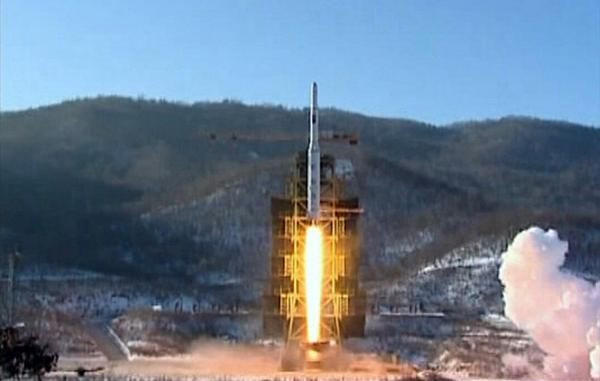North Korea Satellite Launch Prompts Conflicting Reports, Recalls Past Failures

As news of a surprise North Korean satellite launch stirred up consternation across the globe, there is some question of whether the rogue nation's first space adventure will end as quickly as it began.
Unidentified U.S. officials told NBC News that the satellite appears to be “tumbling out of control.” But reports of a North Korean satellite's imminent demise may have been greatly exaggerated; according to South Korean officials, the satellite is orbiting normally. You can track the satellite's progress online.
Though the North Korean satellite appears to lose and gain altitude as you track it, that could just be a consequence of its elliptical orbit. The Kwangmyongsong-3 also appears to have attained a sun-synchronous orbit, a type of path where a satellite travels from the north to south poles and passes over the same spot at roughly the same time each day. The satellite could stay up in orbit for months before falling back to Earth.
If the satellite really was out of control and happened to hit another satellite, the consequences could be dire. One NASA scientist, Donald Kessler, has hypothesized that a satellite collision could lead to an even bigger pileup that could cripple the global satellite network.
North Korea has tried five times to launch a satellite since 1998. A previous attempt in April failed just a few minutes after the rocket left the landing pad. Another launch in April 2009 failed during the third stage of separation, sending a rocket east over Japan, sparking international anger.
While around 50 countries in the world have built their own satellites, only 10 countries (now including North Korea) have the ability to send them into space. The Soviet Union was first, with the Sputnik satellite launch in October 1957, followed shortly thereafter by the U.S., which sent Explorer 1 into orbit in February 1958, bringing America back into the space race.
France, Japan, China, the UK, India, Israel, Iran and now North Korea also have launch capabilities. The Ukraine and Russia inherited facilities from the former USSR, and France joined together with a number of other European countries to form the European Space Agency, which works with private French space transport company Arianespace.
Though North Korea's previous failures may cause some to snicker, launching a satellite into orbit is not an easy task. The first attempt by the U.S., using the Vanguard rocket, failed spectacularly in December 1957, ascending four feet off of the launch pad before falling back and exploding. The entire affair was broadcast live on TV and prompted newspaper headlines mocking the launch with names like Kaputnik or Stayputnik.
The Unha rocket that carried the satellite Kwangmyongsong-3 is thought to have a range long enough to deliver payloads to the West Coast of the U.S.
But even though North Korea has the range, there isn't likely an imminent threat, according to ABC News consultant and former Deputy Assistant Secretary of State Stephen Ganyard.
“They haven't figured out how to weaponize a nuclear [bomb] that will fit in a missile, nor do they have accurate guidance at long ranges,” Ganyard told ABC.
North Korea claims its satellite is for weather and crop monitoring, but the U.S. and others are taking the launch as a serious signal that the country is expanding its nuclear capabilities and have condemned the launch.
“The satellite is not thought to be very capable but will give North Korea experience communicating with it and downloading low-resolution images,” space weapons and ballistics expert David Wright wrote in a blog post for the Union of Concerned Scientists.
© Copyright IBTimes 2024. All rights reserved.





















